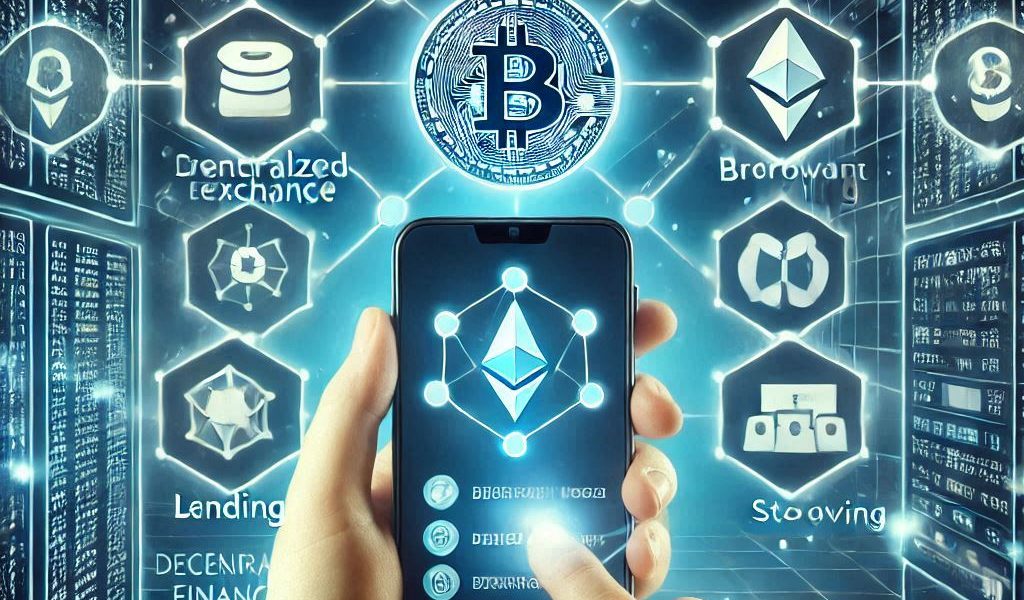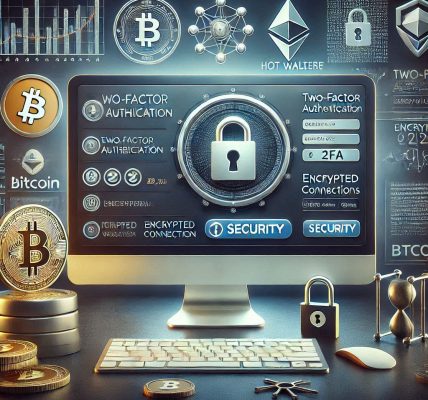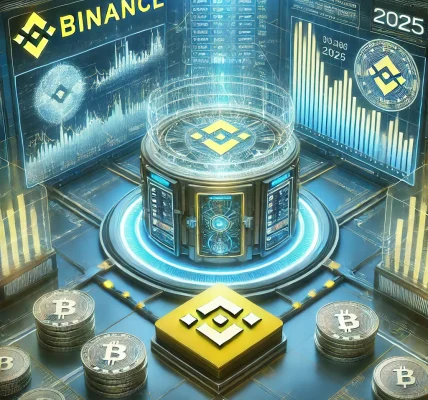The world of finance is evolving rapidly, and one of the most exciting developments in recent years is the rise of Decentralized Finance (DeFi). If you’ve heard of cryptocurrency, you’ve likely come across the term DeFi, but what exactly does it mean, and how does it work? In this blog, we’ll explore the fundamentals of DeFi, its key components, and why it’s transforming the traditional financial landscape.
What is DeFi?
DeFi stands for Decentralized Finance, a term used to describe a movement that seeks to recreate and improve upon traditional financial services using blockchain technology. Unlike conventional finance, which relies on intermediaries such as banks, brokers, and financial institutions, DeFi eliminates these middlemen by leveraging smart contracts and decentralized networks, often built on platforms like Ethereum.
At its core, DeFi aims to offer financial services such as lending, borrowing, trading, and earning interest in a decentralized manner, meaning that no central authority or institution controls the processes. Instead, the system is powered by code, and participants interact with each other directly via decentralized applications (dApps).
How Does DeFi Work?
DeFi works by using blockchain technology to facilitate peer-to-peer (P2P) transactions without the need for intermediaries. These transactions are powered by smart contracts, which are self-executing contracts with the terms of the agreement directly written into code. When certain conditions are met, the smart contract automatically executes the transaction, ensuring transparency, security, and efficiency.
Here’s a simple breakdown of how DeFi operates:
- Smart Contracts: DeFi platforms use smart contracts to automate and enforce financial transactions. These contracts eliminate the need for a third party, reducing fees and the risk of human error.
- Blockchain Networks: Most DeFi platforms are built on public blockchains, particularly Ethereum, which provides the infrastructure for decentralized applications (dApps).
- Tokens and Cryptocurrencies: DeFi platforms use digital currencies, often Ethereum-based tokens, to facilitate transactions. These tokens can be used for various purposes, such as lending, staking, or providing liquidity.
Key Components of DeFi
- Decentralized Exchanges (DEXs): A DEX is a decentralized platform where users can trade cryptocurrencies directly with each other without relying on a central authority. Examples include Uniswap and Sushiswap. DEXs allow users to maintain control of their funds, which reduces the risk of hacks and theft associated with centralized exchanges.
- Lending and Borrowing: DeFi platforms allow users to lend their assets and earn interest, or borrow funds by collateralizing their crypto holdings. Popular platforms for this service include Aave, Compound, and MakerDAO. These platforms use smart contracts to facilitate loans without the need for traditional banks.
- Staking and Yield Farming: Staking involves locking up cryptocurrency to support the network and earn rewards. Yield farming takes it a step further by providing liquidity to decentralized platforms in exchange for rewards. These practices allow users to earn passive income by participating in the DeFi ecosystem.
- Stablecoins: Stablecoins are cryptocurrencies designed to maintain a stable value by being pegged to a fiat currency, such as the US dollar. Popular examples include USDT (Tether) and USDC. These coins play a key role in DeFi by offering a stable store of value, making transactions more predictable and reducing volatility.
- Insurance: In traditional finance, insurance protects individuals against various risks. Similarly, in DeFi, decentralized insurance platforms have emerged to offer coverage for smart contract failures, hacks, or other unforeseen events. Platforms like Nexus Mutual are leading the way in this space.
Why Is DeFi Important?
- Access to Financial Services for Everyone: One of the most significant benefits of DeFi is that it democratizes access to financial services. Anyone with an internet connection can participate, regardless of their geographic location or financial status. This opens up opportunities for people in underbanked or underserved regions who may not have access to traditional banking services.
- Reduced Costs and Fees: By eliminating intermediaries, DeFi reduces transaction fees and other costs typically associated with financial services. Traditional banks, brokers, and payment processors charge significant fees for their services, but with DeFi, users can interact directly with each other, leading to lower overall costs.
- Transparency and Security: DeFi operates on public blockchains, which provide full transparency for every transaction. Every action taken on a DeFi platform is recorded on the blockchain, making it easy to track and verify. Additionally, smart contracts are auditable and immutable, ensuring that once a transaction is executed, it cannot be altered or reversed.
- Innovation and Financial Inclusion: DeFi fosters innovation in the financial space, enabling the creation of new financial products and services that can cater to different needs. It also promotes financial inclusion by providing services to people who may not have access to traditional financial institutions.
Risks and Challenges of DeFi
While DeFi has great potential, it’s important to be aware of the risks and challenges associated with it:
- Smart Contract Vulnerabilities: Since DeFi relies heavily on smart contracts, any bugs or vulnerabilities in the code can lead to significant financial losses. While smart contracts are designed to be secure, they are not immune to hacking and exploitation.
- Regulatory Uncertainty: DeFi operates in a largely unregulated space, which can lead to legal challenges in the future. Governments around the world are beginning to pay closer attention to DeFi, and regulatory frameworks may be introduced that could impact its growth.
- Market Volatility: Cryptocurrencies are known for their price volatility, which can impact the value of assets held in DeFi platforms. While stablecoins help mitigate this to some extent, the value of other crypto assets can still fluctuate dramatically.
- Lack of Consumer Protection: Traditional financial systems have consumer protection mechanisms in place, such as insurance and fraud detection. DeFi, however, lacks such safety nets, and users are more vulnerable to hacks, scams, or technical failures.
Conclusion
DeFi is reshaping the way we think about finance, offering a decentralized, transparent, and accessible alternative to traditional financial systems. It empowers individuals to take control of their financial assets without relying on banks, brokers, or other intermediaries. While DeFi presents exciting opportunities, it’s essential to approach it with caution and conduct thorough research to understand its risks and rewards.




